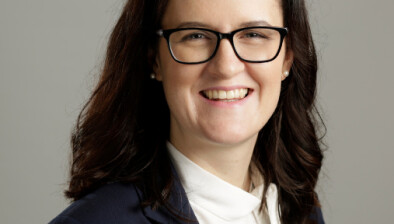Majority of Scottish companies planning redundancies when furlough scheme ends

David Kirchin
The majority of Scottish firms say they plan to make redundancies once the UK government’s furlough scheme comes to an end, according to Addleshaw Goddard’s latest survey of Scottish companies.
The Addleshaw Goddard Scottish Business Monitor, produced in partnership with the Fraser of Allander Institute, has revealed that of those firms who used the furlough scheme, 12 per cent expect a large decrease in the number of employees within their company and 43 per cent expect to see a small decrease.
More positively, 41 per cent say they expect to see no change in the number of staff.
The data arrives as HMRC statistics indicated that businesses in the Highland, Perth and Kinross, Glasgow, South Ayrshire and Stirling council areas furloughed a larger share of workers than firms in other Scottish local authorities.
However, data from the Federation of Small Businesses in Scotland has revealed that between 23 per cent and 34 per cent of eligible workers were furloughed across every Scottish council area.
Addleshaw Goddard’s monitor indicated that business sentiment around operational capacity, day-to-day activity, employment and debt levels, is expected to depend largely on a combination of how the virus is contained over the coming months and how Scottish policy reacts. While day-to-day business activity remains substantially below normal levels, the volume of overall business activity anticipated for the next six months is expected to recover ‘significantly’.
Looking at employment and capital investment, whilst expectation indicators remain negative there has been some notable recovery. Expectations for employment over the next six months have increased from -57 per cent to -21 per cent, with capital investment recording an increase from -68 per cent to -21 per cent.
The survey found that when compared to normal levels for the next six months, the average firm expects to operate at 51-75 per cent capacity. Yet, one in every four firms expects to operate at normal or above-normal capacity. Business activity is also expected to rise from a record low, with a net balance of 70 per cent of firms reporting a decrease in the first quarter of 2020 to 4 per cent as we look ahead to the next six months.
The survey also found that 61 per cent of businesses said that their cash flow position was secure or very secure for the next six months – leaving a significant proportion of firms at risk.
Many businesses have also significantly increased their debt to get through the lockdown period, with 47 per cent of firms saying their burden has increased as a result of the pandemic. Of those who have witnessed an increase, 41 per cent have seen this burden increase by a large amount, 46 per cent by a moderate amount and 13 per cent by a small amount.
Graeme Roy, director of the Fraser of Allander Institute, said: “As we continue to emerge from the public health crisis, the economic costs of the lockdown are becoming ever clearer. This summer’s activity figures were the lowest since the survey began in 1998. And whilst we find a marked improvement in business sentiment for the next six months, the finds are highly polarized with just as many firms expecting a further fall in activity as those expecting an increase.
“Around half of all firms in the survey intend to only operate at less than 75 per cent of normal capacity over the next six months. As a result, and as the government Job Retention Scheme (JRS) comes to an end, a similar proportion of firms – around 50 per cent – who have used the JRS are planning to decrease staffing levels.
“In short, whilst the economic recovery has clearly started, it will be a long road ahead.”
David Kirchin, head of Scotland at Addleshaw Goddard, added: “There is no doubt the economic outlook for the foreseeable future looks testing and, while activity levels are now improving, they remain challenged.
“However, there is encouragement to be found in the survey data. Nearly half of companies say they expect no change to their workforces and 61 per cent of companies described their cashflow position as secure or very secure for the next six months. The survey also confirms that companies have been able to access debt.
“For others, our recent experience tells us that potential investors have a healthy appetite to seek out opportunities with innovative businesses, as companies have been able to obtain new equity capital in these last few months, whether by a private raise or by turning to the public markets.”








